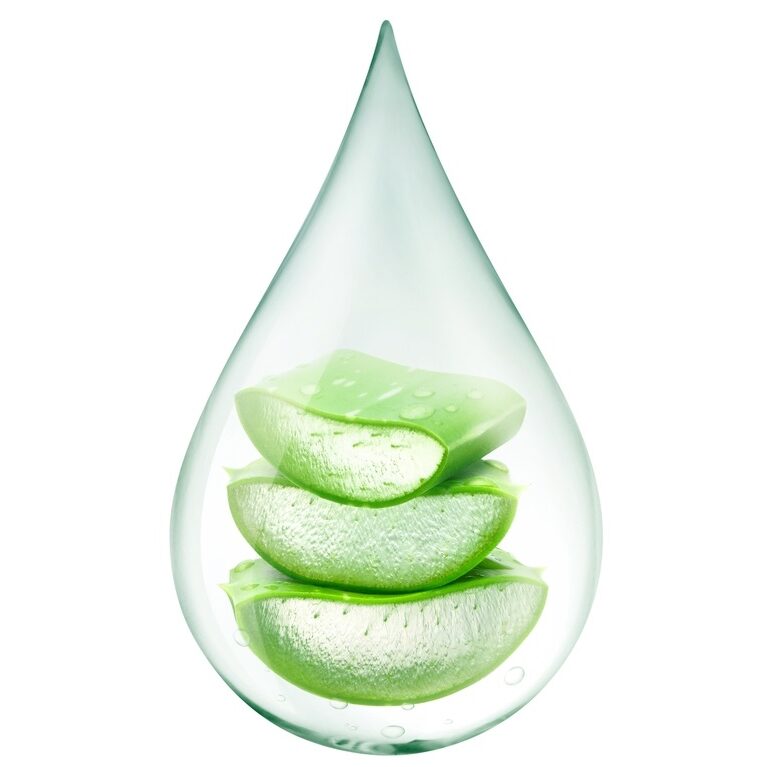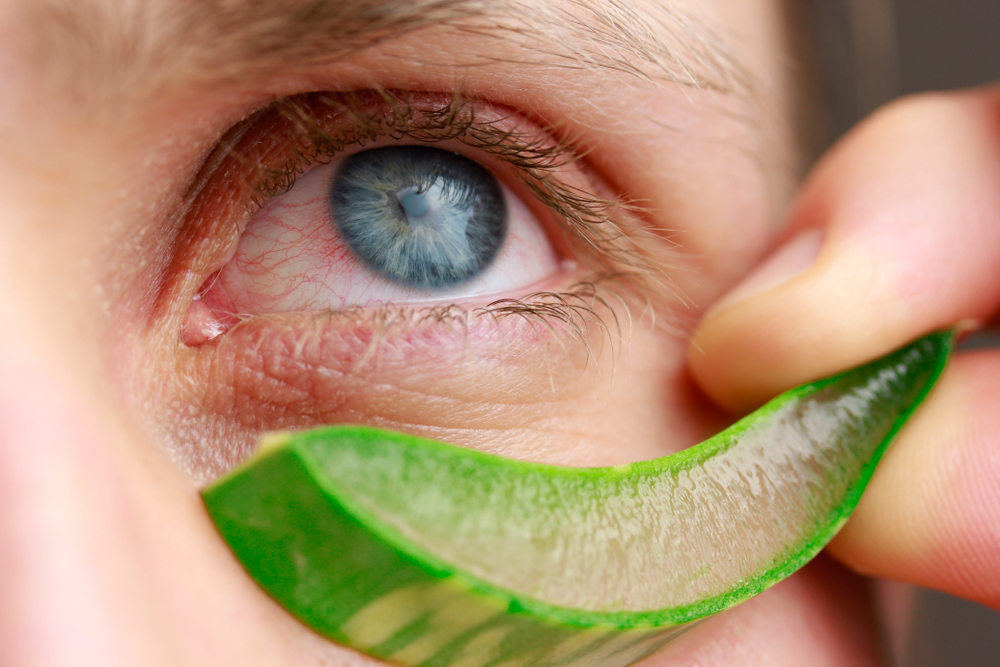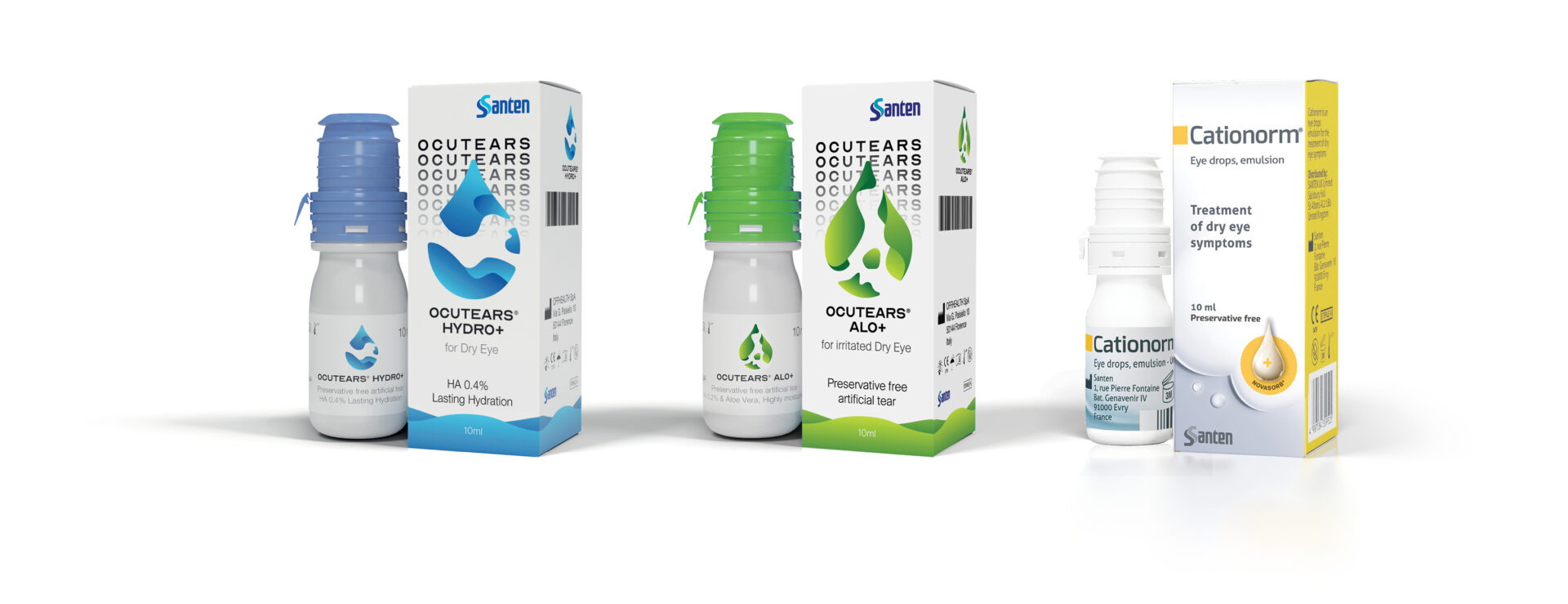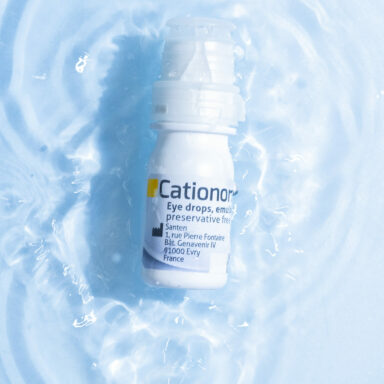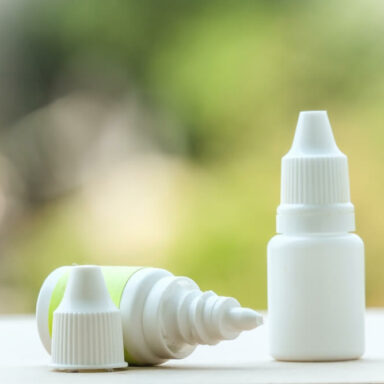Blink and you’ll feel your eyelids glide smoothly over your eyeballs to meet your lower lash line, and you may even hear a little squish sound at the end. That’s because you have something called a tear film – the outer wet layer on your eyeballs which is made up of a delicate balance of water, oil, and mucus.1 It works hard to protect and lubricate the eye.1
Artificial tears – a type of eye drop, mimic natural tears.2 They’re like a helpful sidekick, ready to jump in whenever you’re not making enough tears or they’re evaporating too fast (more on why that happens in our blog post, here).2
What are Aloe Vera eye drops? Some eye drops come with extra ingredients to boost certain effects, like Aloe Vera. You’ve probably seen these spiky looking plants at the garden centre, but they’re a lot friendlier than they look.
Did you know?
Aloe Vera is a type of plant called a succulent – these are plants which are thick and fleshy to help retain water.3 Succulent comes from Latin ‘sucus’ which means ‘juice’ or sap’.3 That’s why they’re hardy and you’ll find them in dry places.3
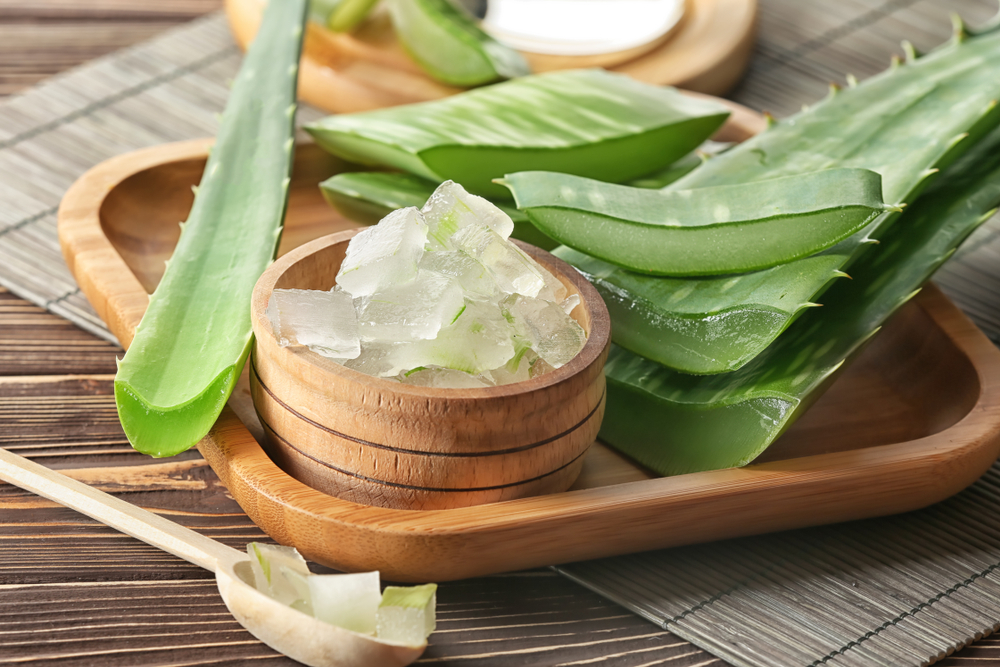
What are the benefits of Aloe Vera in eye drops?
The Aloe Vera plant has been used for centuries for its health, beauty, medicinal and skin care properties.3 Today, you’ll find it in many products, from moisturisers, to burns and wound treatments.3 Scientists have discovered that Aloe Vera has some special properties, including being a natural:3,4
- Antioxidant – Antioxidants are molecules that fight free radicals in your body. Your body needs a balance of free radicals and antioxidants but when you get too many free radicals it can increase your risk of cancer, diabetes and heart disease.5 Your body has its own antioxidant defences, but we can get antioxidants from certain fruits, vegetables, and other plants too.5
- Anti-inflammatory – Inflammation happens when the immune system defends the body from harmful agents, such as bacteria and viruses. In the process it can cause some discomfort, including redness and swelling.
- Antimicrobial – This is the ability to destroy certain harmful microbes – they’re small living things that cause disease like bacteria.
- Humectant – Aloe Vera is a type of moisturiser called a humectant, meaning it attracts water and hangs on to it like a super sponge!
With all this going for it, it’s no wonder that the ancient Egyptians dubbed Aloe Vera ‘the plant of immortality’!3
When Aloe Vera is added to eye drops, you won’t be surprised to learn that it helps hydrate, reduce redness and swelling.4,6-9 Good news, if you have sensitive or irritated eyes!11
Did you know?
Egyptian queens Nefertiti and Cleopatra used Aloe Vera as part of their regular beauty regimes, and Alexander the Great and Christopher Columbus used it to treat soldiers’ wounds.3
Top tip
You should never put Aloe Vera gel directly into your eyes – it can cause burning, irritation and other uncomfortable side effects!11 Aloe Vera eye drops are especially designed for eyes, so you can enjoy some of the benefits of this renowned plant.
What are anti-inflammatory eye drops?
While some eye drops, such as those containing Aloe Vera, can have anti-inflammatory properties, ‘anti-inflammatory eye drops’ is a unique classification and a distinct group of eye drops. These eye drops typically fit into four main categories:12
- Corticosteroids: These help with short-term swelling, often used after eye surgery
- Antihistamines: These help with eye allergies, like a reaction to pollen or pet dander
- Mast cell stabilisers: Used for allergies too and for more severe forms of eye allergy disease such as Vernal Keratoconjunctivitis (VKC)
- Non-steroidal anti-inflammatory drugs (NSAIDs): These help with swelling after eye operations like cataract surgery, relieve pain after eye injuries and are often prescribed to help manage common eye complaints like pain after surgery or trauma and allergies. Ibuprofen is an example of a NSAID that you’ll probably recognise!
Note that some of these eye drops need a prescription and they can have side effects such as stinging or irritation.12 That’s why it’s always a good idea to have a chat with your doctor or pharmacist before using these eye drops.
What eye conditions can aloe vera help with?
Eye drops with Aloe Vera are designed to help sensitive, dry or red, irritated eyes.10 They’re a great option if you’re experiencing symptoms of:13
- Itchiness
- Soreness
- Gritty feeling
- Redness
- Blurry vision
- Sensitivity to light
- Overly watery eyes
You can also use them to help with dry eye symptoms caused by:10
- Medication
- Prolonged exposure to sunlight
- Exposure to air-conditioned or dry environment
- Prolonged digital screen use
- Post-surgery discomfort of the eye
Be sure to always check the label first or talk to your pharmacist or doctor to see if an eye drop with Aloe Vera could be right for you. For example, Ocutears Alo+ is suitable for all of the above uses and you’ll find this written on the instructions leaflet.
Causes of eye inflammation
When your eyes get swollen and inflamed it can be a sign that your immune system is working hard – although it can feel unhelpful, it’s crucial as our natural defence against infection, allergies, irritation, injury, or trauma to the eyes, eyelids, or surrounding tissues. Sometimes the body can mistakenly trigger an immune response too, like in the case of hay fever or autoimmune conditions.15
Whether you’ve reacted badly to a facial product or just rubbed your tired eyes a little too hard, many of us have experienced the discomfort of eye inflammation in our lives.16 Often, it’s minor and can clear up on its own or with the helping hand of eye drops.16-20 Common causes include:
- Blepharitis – inflammation along the edges of the eyelids17
- Allergy e.g., to pollen, dust or animal fur18
- Conjunctivitis – also known as pink eye, an eye condition caused by infection or allergies19
- Trauma near the eye – such as an injury, surgery or insect bite20
In rare cases, eye inflammation can be the sign of an underlying condition that needs treating or a specific type of medicated anti-inflammatory eye drop, so it’s important to get it checked out by a doctor.15
How to apply Aloe Vera eye drops
As with any eye drops, always read the instructions and use as directed. As a rule of thumb:2,10
- Wash your hands before opening the bottle
- Tilt your head back and gentle squeeze the correct number of drops in each eye, as directed by the instructions (make sure the pipette doesn’t touch your eye!)
- Use 1 or more times a day as directed
- Close the cap and store somewhere dry and out of direct sunlight
Top tip
Read our blog post on how to apply eye drops easily, so you can pipette them in like a pro! It’s easy when you know how.
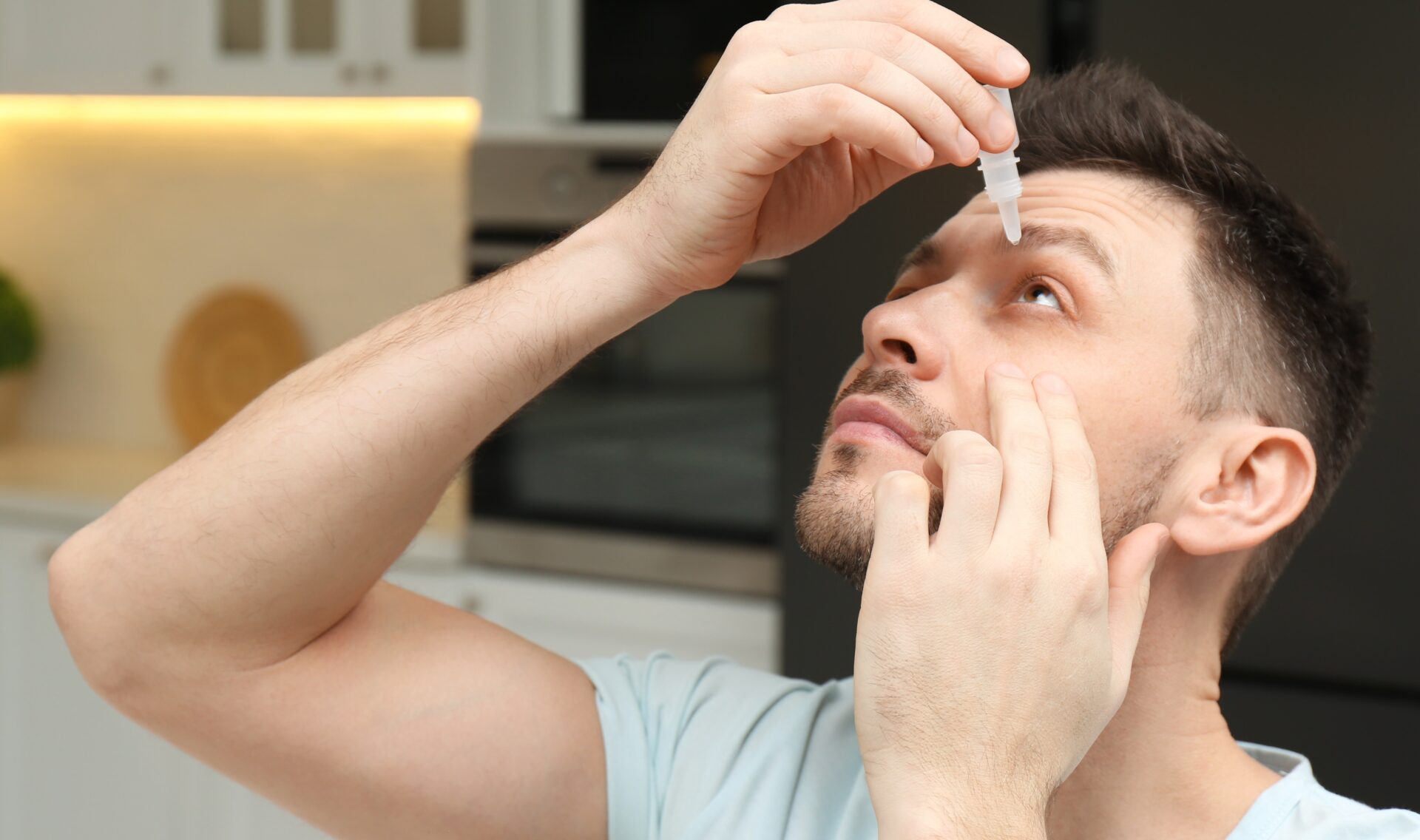
Where can you find Aloe Vera eye drops?
Eye drops with Aloe Vera are available without a prescription and you can even buy them online and get them delivered to your front door!10
Did you know?
Aloe Vera eye drops like Ocutears Alo+ can be a great pick-me-up after a long day of screen use as they can give a prolonged feeling of freshness and reduce redness.10
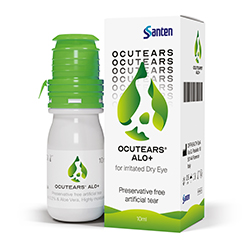

Always read the label.
Top tip
Look for Aloe Vera eye drops without preservatives as some studies suggest that, over time, eye drops with preservatives can lead to dry eye.14
If you are searching for eye drops for your dry eye symptoms with or without Aloe Vera, check out the Ocutears range. All our artificial tear eye drops are preservative free and suitable for everyday use including for contact lens wearers.10,21,22
Always read the label.
If you are unsure about your diagnosis, please speak to your doctor or pharmacist.


